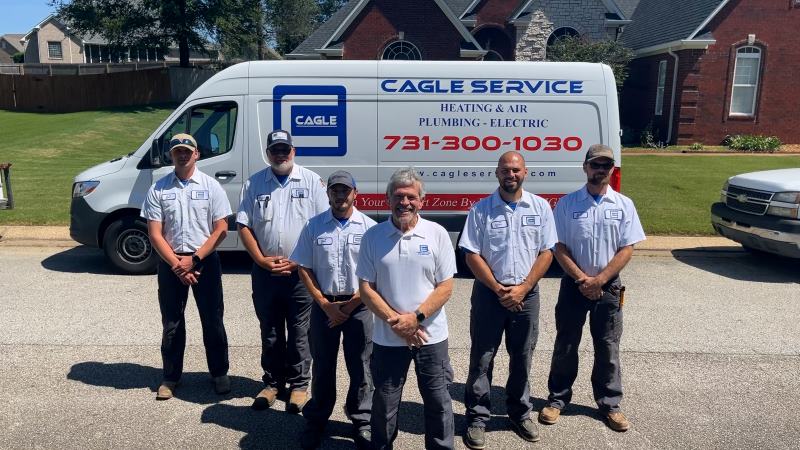When it comes to buying a new furnace, or a new anything for that matter, it seems like going with the newer, more efficient option would be the wisest choice – especially if savings is the goal. But, that’s not always the case. It really depends on your current situation and determining if a 95% efficiency furnace is right for you. When buying a new furnace, there are more factors at play than we might notice initially.
At first glance, most of us think that a furnace with a 95% efficiency rating (AFUE) is going to be a better option than a furnace that is 80% efficient. After all, that’s a 15% increase in efficiency! Well, there is truth to that, but let’s observe some other factors and elements that need to be considered before pulling the trigger on that high-efficiency furnace.
Other Factors That Affect a Furnace’s Efficiency
When determining a furnace’s efficiency, the AFUE rating is usually the measurement used to determine the efficiency. AFUE stands for annual fuel utilization rate. This is simply a measurement of how efficiently the furnace uses the fuel to actually produce and deliver heat. For example, a furnace with an AFUE rating of 80% means that 80% of the fuel that is used contributes to delivering heat to where it’s needed. The other 20% is lost during the process. A furnace with a 95% efficiency rating uses 95% of the fuel to produce and deliver heat to where it’s needed. The same amount of fuel is used in both cases. The same amount of money is spent on that fuel being used. But, in one scenario 80% of the fuel is used to contribute to delivering heat, whereas in the other scenario 95% of the fuel is used to contribute to delivering heat.
So, with the higher efficiency furnace model, fuel is better utilized and less is wasted.
For more in-depth information on AFUE and how it is calculated, check out our recent post: What is AFUE for Furnaces?
Now, while the above mentioned is true, there are other factors than affect the efficiency of a furnace.
1) The Number of Stages – Older furnaces only came in one stage – single stage. A single stage furnace blows and delivers the heat at one constant rate – full blast! With newer furnaces, there is the option for a multi-stage furnace, such as a two-stage furnace. A two-stage furnace can deliver the heat at a lower rate or at a higher rate. The low stage allows for a slower, steady delivery of the heat which requires less energy to produce.
The gas valve and burners determine if the furnace is a single-stage or multi-stage system. This doesn’t affect the rate of airflow. It affects how much heat is delivered into the ductwork.
2) Airflow Speed – Not to be confused with stages, the speed of airflow is another factor that can affect a furnace’s efficiency. The blower motor within a furnace dictates the speed of the airflow – the rate at which heated air is dispersed indoors. A single-speed blower motor only has one rate of flow – high. A multi-speed motor allows for a high or low speed. It runs in low until it needs to compensate for lower temperatures and then ramps up to high speed.
A variable-speed system is the most modern and efficient of all. This type of blower motor is continually adjusting its speed in order to provide the precise amount of heated air needed. It even makes adjustments for factors such as closed vents and even dirty or clogged air filters.
How does this help you in determining whether to buy a 80% efficiency furnace or a furnace that is 95% efficient? In order to fully answer this, we need to go over the next point – the location of the new furnace.
The Location of the Furnace
If your current furnace is a standard 80% efficiency furnace (or lower), and it’s in a vented area, then it’d be wise to stick with the same. Because these furnaces use open combustion, they are recommended to be installed in vented areas where air can escape. If the area isn’t vented, open combustion systems can cause safety issues if something goes wrong.
On the other hand, 95% efficiency models use sealed combustion in order to produce heat. They don’t pull in their needed air from its surrounding areas like a standard 80% efficiency furnace. These high-efficiency furnaces are required to have extra piping installed in order for the furnace to suck in air from the outside air and to vent the exhaust outside. So, if your new furnace is going to be located in a non-vented area, such as a sealed attic, then considering a 95% efficiency furnace would definitely be a good idea.
The point is that if your furnace’s location is going to be in a vented area, then it’s perfectly set up for a 80% efficiency furnace. There are no extra requirements or costs. In order to install a 95% efficiency furnace, then extra piping will have to be run in order to provide the specialized venting that is required. So, you will have the initial higher costs of the high-efficiency furnace plus the extra costs associated with installing the new venting method.
The increase in efficiency and savings on your energy bill may or may not cover these extra costs over time, depending on how long you plan on remaining in your current home (or business).
If the furnace’s location is non-vented and enclosed, then a 95% efficiency furnace makes a lot of sense because some sort of venting method needs to be installed either way.
Something Worth Considering
When replacing your furnace, remember, there are other ways to increase efficiency other than just depending on the AFUE rating. If you are leaning towards a standard 80% efficiency furnace, you could always go with a two-stage unit and still increase efficiency if your current furnace is a single-stage unit. You can also go with the multi-speed or variable-speed airflow option as well. These factors will both increase efficiency when compared to a single-stage and/or single-speed model.
We hope this has given you some in depth information to help you when considering the 80% efficiency vs 95% efficiency furnace debate. Remember, it comes down to your specific goals and situation while considering all of the factors involved.
Have you gone through this process before? What has been your experience when deciding on a standard efficiency furnace vs a high efficiency furnace? What did you ultimately decide?
Feel free to comment your thoughts below! We’d love to hear from you.


